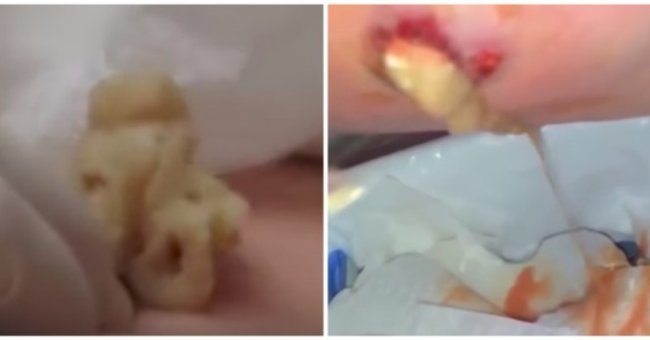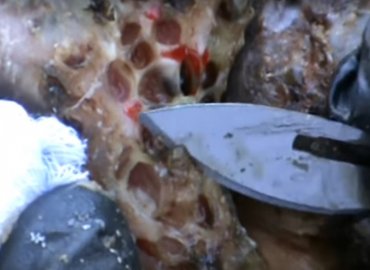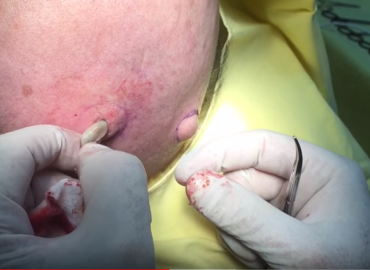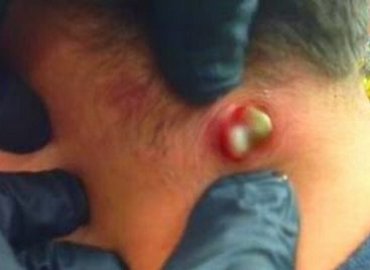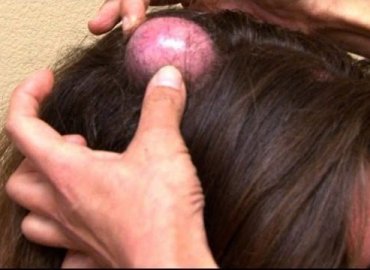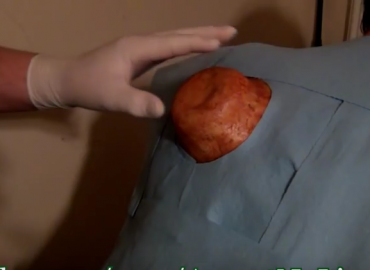Cysts are closed capsule or sac-like structures, typically filled with liquid, semisolid, or gaseous material, very much like a blister. In this article we will describe the various types.
Cysts occur within tissue and can affect any part of the body. They vary in size from microscopic to the size of some team-sport balls – large cysts can displace internal organs.
In anatomy, a cyst can also refer to any normal bag or sac in the body, such as the bladder. In this article, cyst refers to an abnormal sac or pocket in the body that contains liquid, gaseous, or semisolid substances.
A cyst is not a normal part of the tissue where it is located. It has a distinct membrane and is separated from nearby tissue – the outer (capsular) portion of a cyst is called the cyst wall. If the sac is filled with pus it is not a cyst; it is an abscess.
Fast facts on cysts
Here are some key points about cysts. More detail and supporting information is in the main article.
Cysts are usually noncancerous and have a sac-like structure that can contain fluid, pus, or gas.
Cysts are common and can occur anywhere on the body.
Cysts are often caused by infection, clogging of sebaceous glands, or around earrings.
It is unusual for cysts to cause pain unless they rupture, become infected, or inflamed.
Breast cysts are often painful and may be noticeable during a breast examination.
What causes cysts?
Common causes of cysts include:
- tumors
- genetic conditions
- infections
- a fault in an organ of a developing embryo
- a defect in the cells
- chronic inflammatory conditions
- blockages of ducts in the body that cause fluids to build up
- a parasite
- an injury that breaks a vessel
Benign and malignant cysts
Most cysts are benign and are caused by blockages in the body’s natural drainage systems. However, some cysts may be tumors that form inside tumors – these can potentially be malignant. Examples include keratocysts and dermoid cysts.
Symptoms of cysts
Signs and symptoms vary enormously depending on what type of cyst it is. In many cases, a person becomes aware of an abnormal lump, particularly in cases with cysts of the skin or when a cyst is just below the skin. A person may notice a cyst in their breasts when they examine them by touching them. Breast cysts are often painful.
Some cysts in the brain can cause headaches, as well as other symptoms.
Many internal cysts, such as those in the kidneys or the liver, may not have any symptoms and go unnoticed until an imaging scan (MRI scan, CAT scan, or ultrasound) detects them.
Types of cysts
Some of the most common types of cysts are listed below:
Acne cysts
Cystic, or nodulocystic, acne is a severe type of acne in which the pores in the skin become blocked, leading to infection and inflammation. You can read all about acne cysts in our other article: What is cystic acne?
Arachnoid cysts
The arachnoid membrane covers the brain. During fetal development the arachnoid membrane doubles up or splits to form an abnormal pocket of cerebrospinal fluid. In some cases, doctors need to drain the cyst. Arachnoid cysts may affect newborn babies.
Baker’s cysts
Baker’s cysts are also called popliteal cysts. A person with a Baker’s cyst often experiences a bulge and a feeling of tightness behind the knee. Pain gets worse when extending the knee or during physical activity. Baker’s cysts are usually caused by a problem with the knee joint, such as arthritis or a cartilage tear.
Bartholin’s cysts
These may occur if the ducts of the Bartholin glands (situated inside the vagina) become blocked. Women may undergo surgery and/or be prescribed antibiotics.
Breast cysts
Breast cysts are often painful and usually need to be drained. Some studies have indicated that breast cysts may point to a raised breast cancer risk.
Chalazion cysts
Very small eyelid glands (meibomian glands) make a lubricant that comes out of tiny openings in the edges of the eyelids. Cysts can form if the ducts are blocked.
Colloid cysts
These are cysts that contain gelatinous material in the brain. In most cases, the recommended treatment is surgical removal of the cyst.
Dentigerous cysts
These are cysts surrounding the crown of an unerupted tooth.
Dermoid cysts
Dermoid cysts are a type of cyst that include mature skin, hair follicles, sweat glands, clumps of long hair, as well as fat, bone, cartilage, and thyroid tissue.
Epididymal cysts
These are cysts (spermatocele) that form in the vessels attached to the testes. This type of cyst is estimated to affect 20-40 percent of American males and does not typically impair fertility or require treatment. If it causes discomfort a doctor may suggest surgery.
Ganglion cysts
You can read more about these in our dedicated article: What is a ganglion cyst?
Hydatid cysts
A relatively small tapeworm forms cysts in the lungs or liver. Treatment includes surgery and medication.
Ovarian cysts
The majority of ovarian cysts are benign. Some can become so large that the woman looks pregnant. Ovarian cysts 5 centimeters (cm) long or less are common during a woman’s reproductive years. Up to 18 percent of females will be diagnosed with an ovarian cyst or tumor at some time in their life, and a small percentage of them will be diagnosed with ovarian cancer.
Pancreatic cysts
Most pancreatic cysts are not regarded as true cysts. They are referred to as pseudocysts as they do not contain the type of cells found in true cysts. They can include cells normally found in other organs, such as the stomach or intestines.
Periapical cysts
These are also known as radicular cysts. They are the most common odontogenic (relating to the formation and development of teeth) cyst and are usually caused by inflammation of the pulp, pulp death, or dental caries.
Pilar cysts
These are also known as trichilemmal cysts. They are fluid-filled cysts that form from a hair follicle and are most commonly found in the scalp.
Pilonidal cysts
These cysts form in the skin near the tailbone (lower back), and can sometimes contain ingrown hair. This type of cyst can grow in clusters, which sometimes create a hole or cavity in the skin.
Renal cysts (kidneys)
Several types of cysts can develop in the kidneys. Solitary cysts contain fluids and may sometimes include blood. Some are present at birth; others may be caused by tubular blockages. People with kidney vascular diseases may have cysts formed by the dilatation of blood vessels.
Pineal gland cysts
These are benign cysts that form in the pineal gland in the brain. According to autopsy records, pineal gland cysts are fairly common.
Sebaceous cysts
The skin is lubricated by sebaceous fluid, which can build up inside a pore or hair follicle and form a lump filled with thick, greasy substances. Sebaceous cysts are most commonly found on the skin of the face, back, scalp, and scrotum.
Tarlov cysts
These are also known as perineural/perineurial cysts, as well as sacral nerve root cysts. The cysts are located at the base of the spine and are filled with cerebrospinal fluid.
Vocal fold cysts
There are two types of vocal fold cysts – mucus retention cysts and epidermoid cysts. Vocal fold cysts can interfere with the quality of the person’s speech, sometimes causing vocal cords to produce multiple tones simultaneously (diplophonia), or hoarseness and breathy speech (dysphonia).

